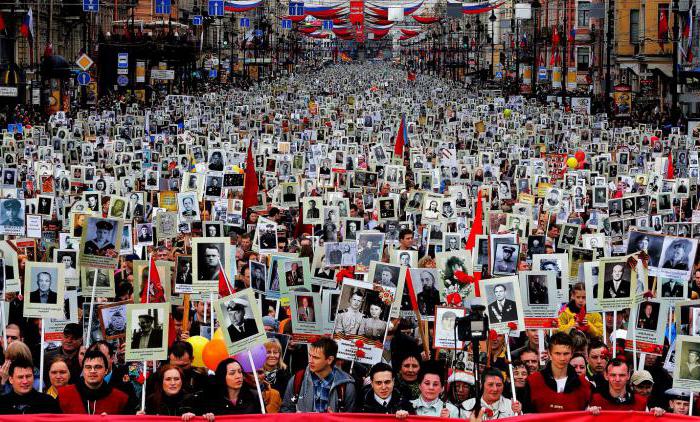Free association to protect their legitimate interests is one of the human and civil rights specified in the Basic Law of the state. Of course, not every collective education is subject to this norm. Only a permanent group created and entered in the state register can be recognized by a public association and fall under the protection of Art. 13 of the Constitution of the Russian Federation.
Definition of a public association
The indicated right of citizens is realized both in the form of direct association in a collective, and through registered organizations - public associations. The latter option is more preferable for those who are aimed at achieving specific results (public control, legislative initiative), and not just expressing their active position. Registered public association it is protected by the state, has the opportunity to defend its rights and interests, to participate in elections and referenda (if it sets such a goal and indicates this in the charter), as well as protect the interests of its or its members in court.
Article 5 of the Federal Law of May 19, 1995 No. 82-FZ defines public associations as voluntary, non-profit, self-governing formations of citizens with common interests, united to achieve common goals.

Association terms
Before creating a public organization, you should make sure that the formation meets the following conditions:
- Voluntary nature of creation - an association is established on the initiative of citizens or legal entities who wish to become its founders. Prior permissions (approvals) for this process are not required, and the founders should be related by a common interest.
- Self-management - initiative and independent adoption by the participants of all decisions on the management of the association, including the determination of the structure, management and financial-audit bodies.
- Non-commercial nature - associations do not conduct activities related to the regular receipt of profit, which is subsequently distributed among the participants.
This is a fundamental difference that separates such formations from commercial legal entities.
Organizational Association Types
Forms of a public organization are a set of conditions and signs established in the current legislation that are characteristic for a certain category of public associations, consisting of a description of the goals of creation, the order of relations between participants and third parties, as well as the procedure for managing property and income.
The choice of the form of the created association is the prerogative of its founders.

Law of May 19, 1995 No. 82-ФЗ discloses their list:
- Social organization. A common form of legal organization, the signs of which are compulsory membership (documented) and joint activities to achieve the goals. For example, public organizations are trade unions, consumer societies, homeowners associations.
- Social movement. This form is characterized by mass character, with the absence of a registered membership and without the need to maintain constant communication and activity.It is aimed at satisfying the intangible interests and desires of citizens (charity, culture, education, ecology, animal welfare, etc.). Social movements can unite a large number of people of different ages and positions, which, accordingly, allows you to organize crowded events.
- Public fund. The activity of such associations is quite specific, since it consists in the formation and management of property, which is then sent for statutory purposes. The sources of welfare of the funds are voluntary contributions, donations and other prohibited income. In this case, the transfer of property to the founders is unacceptable.
- Public institution. There is also no registered membership, but its activity is limited to the provision of certain types of services aimed at achieving the statutory goals.
- The body of public initiative. Such public associations arise at the place of residence, work or study and are aimed at resolving the social problems of those who are part of the formation itself. Amateur bodies include people's squads, parent committees, voluntary fire brigades, library councils, etc.
- Political Party. This form of public association aims to involve citizens of the Russian Federation in the political life of society in the form of forming their convictions and positions, participating in rallies (rallies, marches, pickets, demonstrations), in elections of various levels and referenda, as well as to represent interests.
In addition to organizational forms, there are many other criteria for classifications. For example, depending on whose defense the association operates, there are children's and youth public organizations, societies for the protection of disabled people, participants in the Second World War, the society of the blind, and so on.
Associations and unions of public associations
Public organizations different forms to achieve better results in the work can be formed in alliances and associations. Members of such a collective association participate in its management through their representatives.
At the same time, the formative feature of associations is the uniformity of all participants (uniformity of forms of associations), and for unions - a commonality of goals for which it is created. It is also possible that an association becomes a member of the union, which can be called the primary collective public association.
The Union of Public Organizations, like the Association, in its work focuses mainly on coordinating the work of its members and increasing the level of its effectiveness. These goals are achieved through joint activities, the exchange of information and the attraction of material resources.
To achieve an effective result, collective associations are registered as legal entities. Then the association and the union get the opportunity not only to confer and develop a common strategy of activity, but also to form financial and material resources for the implementation of various projects, programs and activities.
The creation of an association or union, taking into account the fact that legal entities act as founders, proceeds similarly to the registration procedure of any public association. However, the scope of the memorandum of association is much higher, since its content should describe in detail the relations of the parties (members of the union or association) for an indefinite period, establish rights and obligations, responsibility and interaction.
The property of a collective association is formed due to the regular income of the participants. The size and procedure for making contributions must be determined in the memorandum of association and the charter. Assets of an association or union can be created from the following sources:
- regular or one-time membership fees;
- donations (including targeted);
- revenue from the sale of products, fulfillment of orders and the provision of services;
- dividends and other income (interest on stocks, securities, deposits);
- income from property (rent, etc.).
Territorial levels of associations
Russian public organizations differ not only in the forms of organizational structure, but also in the territory in which they operate. Currently, the following levels can be distinguished:
- All-Russian public organization - has branches, representative offices or branches in more than half of the regions of the Russian Federation.
- Interregional public organization - has independent structural units and conducts work in less than half of the country's constituent entities.
- Regional public organization - carries out activities within one subject of Russia (region, republic, region). To obtain this status, the charter must indicate that work will be carried out within a certain territory.
- Local public organization - carries out work on the implementation of the statutory goals within the boundaries of the local government (administrative district, district or settlement). Despite the small space for activities, local associations, as well as regional ones, have the right to create their own branches and representative offices and further increase their territorial level.
Children's and youth associations
Public organizations in Russia, whose activities are aimed at developing and protecting children and the younger generation, should be emphasized. Their creation and work are governed not only by Federal Law of May 19, 1995 No. 82-ФЗ, but also by international documents - the Geneva Declaration of the Rights of the Child of 1924 and the UN Convention on the Rights of the Child of 1984.
Children's public organizations have a positive social and moral orientation and are considered as a significant factor in the development of the next generation of society. The right to participate in the work and the status of a full participant in a children's public association is received by minors who have reached the age of 8 years. However, they cannot be founders and participate in management, as they do not have sufficient civil legal capacity.
Youth public organizations have the right to include age restrictions for participants in the charter documents. Thus, the age category of members will demonstrate that social formation belongs to youth associations. 
Documents for registering the association
The freedom of civil society is also manifested in the procedure for creating public organizations in Russia. They are considered to be created not from the day of state registration, but from the moment a decision is made to create them at a conference or general meeting of founders. Thus, the state recognizes the right of citizens to association to be realized actually from the moment of the corresponding will.
The registration procedure of associations is carried out according to the norms of Art. 21 of the Federal Law of May 19, 1995 No. 82-ФЗ and consists of 2 stages: making a decision and making an entry on the creation of a legal entity in the register. Since the commission of the latter, a public association acquires its legal capacity.
The list of documents for registration of a public association is defined in paragraph 28 of the Administrative Regulation, approved by Order of the Ministry of Justice of the Russian Federation of December 30, 2011 No. 455. It includes:
- Application for registration. The application form P11001 is used, approved by order of the Federal Tax Service of January 25, 2012 No. MMV-7-6 / 25 @. Information on the founders and the address (location) of the permanent governing body are indicated in the corresponding columns of this statement.
- The charter of the association or association (union) of public associations in 3 copies, stitched and numbered.
- Memorandum of Association (agreement) or extract from the minutes of the constituent conference (congress, meeting, meeting). The latter should contain information on the establishment of the association, the approval of the charter and the formation of governing and audit bodies.
- The document on the payment of state duty, the amount of which is determined in paragraph 1 of paragraph 1 of Art. 333.33 of the Tax Code of the Russian Federation and amounts to 4,000 rubles. Payment is made on behalf of the applicant as an individual.
- Protocols of constituent assemblies (conferences, congresses) of structural units for national, interregional and international associations. The regional public organization does not provide additional documents, even if it has branches and divisions within the subject.
- If you use a personal name or a copyrighted mark in the name (symbols, motto), permission to use it is attached to the package of documents.

A set of documents is submitted for registration no later than 3 months from the day of the constituent assembly. The process of entering the association into the register as a legal entity should last no more than 17 days. This is 3 times longer than for commercial associations and is due to the specifics of the status.
Requirements for founders of associations
The process of creating an organization begins with the voluntary initiative of its founders, who decide on the need for a public formation to protect their and public interests, to achieve common goals. Before creating a public organization, it is necessary to check how its founders meet the requirements of the founders of public associations.
The number of founders cannot be less than 3, but the maximum size is unlimited, which allows the social movement to flourish. The sources of public organizations can be individuals and legal entities (non-profit associations), which within the formation will have equal rights and obligations.
The main conditions for founders and members of a public association are the achievement of 18 years and full legal capacity. The only exceptions are members of children's and youth associations, where the age can start from 8 and 14 years old, respectively.
Despite the fact that Federal Law of May 19, 1995 No. 82-ФЗ speaks exclusively about citizens, foreigners and stateless persons who are legally in the country can also act as founders of organizations or movements.
However, certain categories of persons are subject to restrictions in terms of organizing public associations. In particular, they cannot be founders of a public association:
- Foreign citizens and stateless persons included in the “black lists” of the Russian Federation.
- Persons (people and organizations) on the list of suspects in extremist and terrorist activities.
- Public associations of various forms prohibited in the Russian Federation (“Right Sector”, “Islamic State”, “Bloody Harvest Union”, etc.).
- Individuals held in prisons by court order. Moreover, we are talking only about serving real terms, but not about those under condition of parole.
- Government bodies, local self-government at any level. However, this restriction does not apply to state and municipal employees, as individuals.
The founders are not obliged to obtain permission or notify authorities about their decision to create a public association, since the state should not exert any influence on its activities.

Charter of a public association
Details of the structure, future activities, features of relations between participants and other provisions are described in the charter, which is the constituent document of the association.The content of this document, in general terms, consists of the following:
- General information about the created public association - name (full, abbreviated), address, organizational form and territory within which the activity is carried out.
- The objectives of the association, by which they understand the alleged result of its existence. It should be borne in mind that the intentions declared in the charter cannot be associated with entrepreneurial activity, that is, profit-making. The public organization of Russia should strive to achieve social, charitable, cultural, educational and scientific goals, as well as the goals of protecting health, satisfying spiritual and other intangible needs, protecting rights and legitimate interests, peacefully resolving conflicts, and providing assistance (psychological, legal, material) . The list of good intentions is very long and always compiled taking into account the association.
- A detailed description of the structure of the association, managing and financial-audit bodies with a description of their powers, the formation and operation. The rights of public organizations to determine the competence, formation and term of office of governing bodies are very wide. These may include periodic conferences, general meetings, the board, the association council, the board of trustees (for foundations). In general, all management structures are divided into higher, determining the direction and principle of work, and executive, responsible for the current leadership. The audit bodies, in turn, exercise control over the financial activities of the public association, directing the accumulated property to fulfill the statutory goals.
- Regulation on the turnover and reforming of governing and financial control bodies upon completion of the term determined by the founders.
- Conditions for obtaining and losing membership, as well as the procedure for entry and exclusion from the association.
- The list of rights and obligations of members (participants) of a public association. Since the foundation of the formation is voluntary, the charter should not oblige them to do anything for the sake of the organization’s effective activities. Basically, the obligations of participants relate to the timely payment of contributions, participation in management, implementation of decisions of governing and audit bodies, and the inadmissibility of damage. The list of rights of members of associations, in addition to those enshrined in the law, may include the possibility of obtaining information about the work of the organization as a whole and its bodies in particular, receiving assistance, advice, participation in events, obtaining benefits and privileges.
- Symbols of a public association are of great importance for its activities and therefore their description (including graphic images) is given in the contents of the charter.

The requirements of the charter of a public association should be guided by both the association itself as a legal entity and its founders (participants). Other participants in legal relations with a particular public association should also take into account the provisions of the charter of the partner public association, since the exchange of copies of constituent documents is a common practice when concluding any type of agreement.
Entrepreneurship
Founders often reflect on the question of how to create a public organization in order to be able to carry out activities with a profit, which will cover, in whole or in part, the costs of the association. According to paragraph 4 of Art. 50 of the Civil Code of the Russian Federation, any non-profit associations are entitled to carry out profitable activities, if this is provided for by their Charter. However, the norm also contains a limitation - income should be directed towards achieving the goals of associations and cannot be redistributed between its participants (members).
Public organizations can profit from the following sources:
- use of property, including leasing;
- production of goods and the provision of services;
- placement of funds in deposit accounts;
- acquisition and circulation of shares and securities;
- participation in business companies as a contributor.
It is worth taking into account the position of the Supreme Arbitration Court, which in Resolution No. 1441/97 of July 08, 1997 did not recognize as income the interest received by the housing construction cooperative from placing funds in a deposit account with Sberbank of Russia. The court indicated that the cooperative’s activity was not entrepreneurial, since it was implemented not by the nonprofit organization itself, but by its representative (bank).
However, if the profit comes systematically, makes up a large part of its income and is directed to the needs of the formation itself, such activities of public organizations are already entrepreneurial.
Creation of a public association without registration
Information on the procedure and requirements for registration of public organizations is in the public domain. But not everyone can understand how to create a public organization without formal registration.

Such a formation arises as an ordinary association of citizens, and the right to create it is provided for in art. 3 of the Federal Law of May 19, 1995 No. 82-FZ "On Public Associations". The requirements and the procedure for creating an association do not differ from those provided for public organizations acting as a legal entity. However, the list of documents is limited by the charter and the memorandum of association remaining in custody in the governing body.
Among the advantages of informal associations, the opportunity to not keep accounting and tax documents, not to spend money and time on registration and reporting to the Ministry of Justice is highlighted. But on the other hand, an association without obtaining the status of a legal entity cannot be a participant in civil turnover, have its own funds and open bank accounts, act as a representative of interests, and manage property. Thus, it can only use deliberative opportunities and exchange information.








